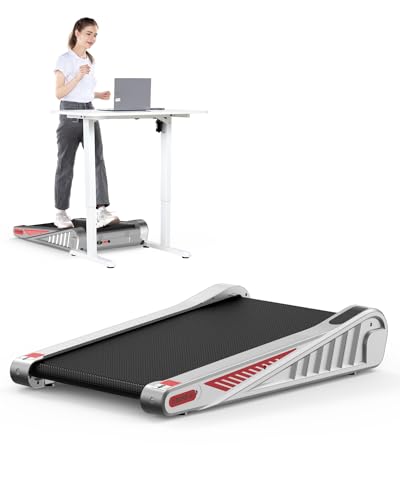The Little Known Benefits Of Treadmill Without Electricity
The Allure of Treadmills Without Electricity: A Comprehensive Guide
In a world significantly dominated by high-tech fitness gadgets, the simplicity and practicality of a treadmill that doesn't require electricity might appear like a throwback. However, treadmills without electricity— frequently described as “manual treadmills”— have gotten considerable popularity amongst physical fitness lovers seeking a more uncomplicated, eco-friendly exercise alternative. This blog site post explores the myriad advantages, features, and factors to consider surrounding manual treadmills, along with answering common concerns from potential purchasers.
What is a Manual Treadmill?
A manual treadmill is a piece of exercise devices that enables users to stroll or run without requiring electrical power. Instead of motorized treadmills that move the belt for you, manual treadmills rely on the user's own effort to move the belt forward. Here's a quick contrast in between manual and motorized treadmills:
Feature
Manual Treadmill
Motorized Treadmill
Source of power
None
Electricity needed
Personnel Mechanism
User-powered
Motor-driven
Cost
Normally more affordable
Normally more pricey
Portability
Highly portable
Typically heavier, less portable
Maintenance
Low
Requires more upkeep
Workout Intensity
Greater (more effort)
Can be adjusted
Advantages of Using a Manual Treadmill
Cost-Effective:
- Manual treadmills are usually more affordable than their electrical counterparts. With a lower preliminary investment and no ongoing electricity costs, these treadmills can be an exceptional alternative for budget-conscious people.
Eco-Friendly:
- As there are no motors or electrical elements included, manual treadmills are a sustainable option. They do not take in fossil fuels and leave a smaller sized carbon footprint.
Versatile Workout:
- Because they need the user to develop their own momentum, manual treadmills can provide more intense workouts, suitable for those looking to increase their stamina and strength.
Portability:
- Manual treadmills are often lighter and much easier to carry. Home Treadmills allow users to quickly store them away or move them from one place to another.
Lowered Risk of Injury:
- By allowing for a more natural running motion, manual treadmills can assist decrease the danger of injury compared to motorized options. Users have control over their pace and can stop or slow down immediately.
Secret Features to Consider
When thinking about a manual treadmill, particular functions must be considered:
- Belt Quality: Look for a non-slip, resilient surface area that provides sufficient grip for safety throughout exercises.
- Incline Levels: Many manual treadmills featured adjustable incline features. Greater inclines can increase exercise intensity.
- Dimensions: Space can be a limitation, so analyzing the treadmill's footprint is essential.
- Weight Capacity: Always check the manufacturer's weight recommendations to ensure security and durability.
- Show Monitor: Some manual treadmills consist of standard screens for tracking elapsed time, range, and calories burned.
Feature
Description
Belt Quality
Non-slip and long lasting products for security
Incline Levels
Adjustable settings for increased workout difficulty
Measurements
Size and weight for ease of storage and transport
Weight Capacity
Guarantee the treadmill accommodates the user's weight easily
Show Monitor
Optional efficiency tracking includes
Selecting the Right Manual Treadmill
Offered the variety of manual treadmills readily available on the marketplace, selecting the ideal one involves assessing personal physical fitness objectives and requirements. Here's a simplified list to assist consumers:
- Assess your physical fitness objectives: Are you aiming for weight loss, endurance, or basic physical fitness?
- Consider the readily available area: Ensure the treadmill will fit well in your designated exercise area.
- Check for functions: Look for adjustable incline settings or included technology such as a distance tracker.
- Research brand names and reviews: Read about the experiences of other users to determine the dependability and sturdiness of the design you're thinking about.
- Set a budget: Compare different models while keeping your budget plan in mind.
Regularly Asked Questions (FAQ)
1. Are manual treadmills appropriate for all physical fitness levels?
Yes, manual treadmills deal with various physical fitness levels. Beginners can start at a slower speed, while advanced users can increase strength and speed.
2. How do manual treadmills affect calorie burn as compared to motorized ones?
Manual treadmills may result in greater calorie burn during workouts, as users should apply more effort to move the belt.
3. Do I require to assemble a manual treadmill?
The majority of manual treadmills come partially assembled, however you'll likely require to complete some assembly depending upon the design.
4. Can I carry out interval training on a manual treadmill?
Absolutely! Manual treadmills are exceptional for interval training since users can easily change their speed and start/stopping motions.
5. How do I maintain a manual treadmill?
Maintenance is simple: regular cleaning of the belt and frame, inspecting for wear and tear, and guaranteeing empty storage when not in usage.
Manual treadmills offer numerous advantages, making them an attractive alternative for lots of physical fitness enthusiasts. Their energy-efficient style, integrated with the capability to offer effective workouts, has cemented their location in home physical fitness regimens. With a clear understanding of their functions and benefits, individuals can make an informed choice about whether a manual treadmill is the best choice for their health journey.
The simple appeal of manual treadmills— combined with their cost-effectiveness and sustainability— guarantees they stay pertinent in today's physical fitness market, supplying a compelling alternative to electric models.
